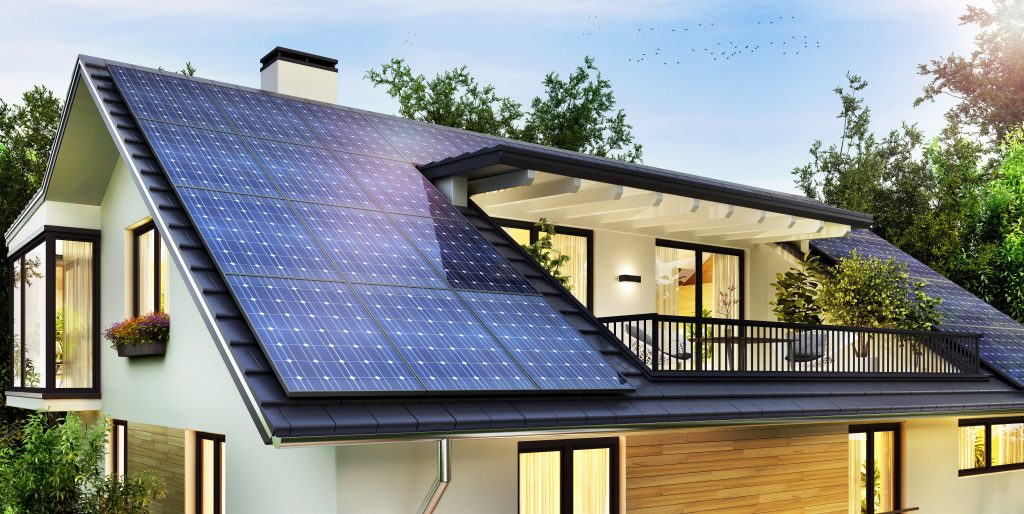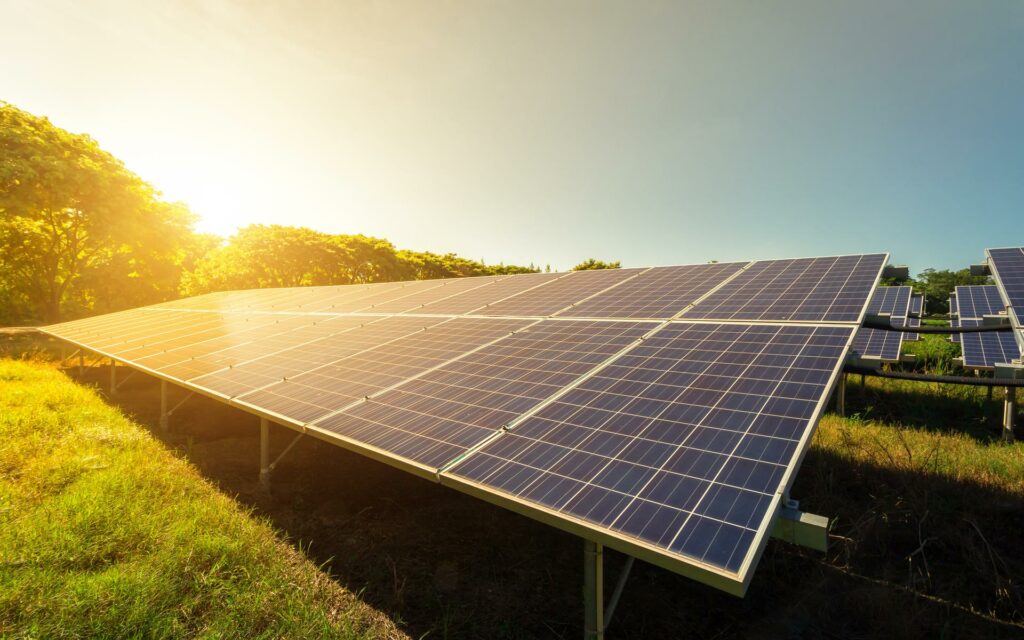How Much is The Initial Investment of Solar Panels?
Over the years, solar panels have become a popular form of heating and powering homes. With up to 1 million homes across the UK now having them, the money that you save in the long term makes up the initial investment. They also are a more environmentally friendly option that many who are wanting eco-homes desire. If you’re interested in installing solar panels, either within your home or on your office building, it’s a good idea to do some research on how much the initial investment is.
As it’s inevitable that energy prices will go up, it’s a good idea to consider installing solar panels. Not only will they protect your home against these future price rises, but they also add value to your home for prospective buyers. Making your home more energy-efficient, they are an important consideration for homeowners looking for a house that will save them money in the long term.
The initial cost will depend on the size and the quality of the solar panels – for example, if you want a small, 1 kW system, it can cost you up to £3000. If you are interested in having a bigger 4 kW solar panel system installed (perhaps the most popular option), you are looking at around £6-8,000. The price of installation will also depend on the company that you get them from. However, over the years, the prices have begun to decrease due to advances in technology – so there isn’t a better time than now to invest in them. Solar panels on a whole can also save you hundreds of pounds on your electricity bill each year (depending on the size of the system of course) – which will, in turn, mean that you will see a return on investment in less time than you might initially think.
Is There Anything I Can Use To Help Get A Quicker ROI?

Due to the cost of solar panels, they might seem out of reach for some UK households. However, this isn’t always the case. If you are looking for a way to help with long term costs, there are some alternatives that you can explore. To make the process a little easier, here are three options that you can look into and see whether they are the right solution for your requirements.
Smart Export Guarantee
Up to March of this year, UK homes could have reaped benefits from the Feed-In Tariff government scheme. Despite this scheme coming to a close, the government has introduced a new scheme called the Smart Export Guarantee (SEG). This places a legal obligation on energy suppliers throughout the UK that has over 150,000 customers to offer export tariffs for homeowners who want to install solar panels by the beginning of 2020.
The tariffs will then, in turn, pay the homeowners (or businesses) that install renewable energy technology (such as a solar PV or solar thermal system) for any excess electricity that they use. Although this method does give you some of your money back, it’s clear that the FIT had the upper hand as it would pay homeowners for all of the electricity they generated and then exported.
An important consideration of this scheme is that companies can set their own rates and therefore it will differ depending on which company you have chosen. Also, the exported power will be metered and no estimations will be accepted, unlike the FIT scheme. They will, however, have to provide a payment which is greater than 0p per kilowatts an hour – so you know you are getting some money back on your investment.
Grid Trade Tariffs
There are also a variety of grid trade tariffs which will provide an income for homeowners who want to trade their energy with the national grid during peak times of demand. Using AI, the tariff will save you money when you aren’t using the energy and will result in a quicker return of investment.
Free Installation
A good benefit that comes with a variety of companies is that they offer free installation for their solar panels. This means that you will only have to worry about the initial investment for them. Even though this might seem tempting, it’s important to research into why they are offering free installation. For example, many companies only offer free installation when a homeowner signs up to a commitment contract (sometimes up to 25 years).
No matter how you fund the purchase, it’s important that you read all of the terms and conditions that come with purchasing solar panels for your home or business. It is a big purchase for many people, so it’s vital that you research and discover what the pros and cons are and think carefully about how you are going to pay for them before taking the leap.
How Long Will It Be Until I Get My Initial Investment back?

If you are unsure if solar panels are the right decision for your home or business, it’s a good idea to think about how long you can expect to wait before you save the initial investment on your energy bills. Within the industry, the point at which you start to save more money than the system cost is called ‘the solar break-even point’ or ‘solar payback time’. In order to calculate the return on investment, you should consider:
- How much the installation costs
- Electricity prices in your area: this can vary greatly throughout the UK and can make a drastic impact
- Any government schemes that are available to you
- If you have taken a loan to pay for the system, how long this will take to payback
The more electricity you use, the shorter the amount of time it will take to break even. As SEG tariffs are now available, it’s a good idea to compare the rates of it, alongside the amount that you will pay to purchase the electricity from your supplier. This will give you a good indication of how much you will save in the long term. The return on investment will also be affected by the size of the system you have installed. If you have a larger, 4 kW system installed, it is more likely to be a better return on investment, seeing your initial investment being paid back within 15 years – but it is a larger initial expense, therefore it might not be possible for everyone. A 1.25 kW, on the other hand, can take up to 17 years to payback because of the size and electricity it can give out.
The payback period will also depend on your specific circumstances – for example, if you work from home, you will start to see the benefits of having solar panels from early on. If you are away from home for long periods of time and don’t use a lot of heating/electricity, it will take longer to see the benefits and therefore longer to accumulate the cost of the initial investment.
Return on Investment in Different Areas of the UK
Although many people believe that the further south you live in the UK, the better the sunlight and therefore the better savings, solar panels are a worthy investment in both the North and South. However, as the south does tend to get more daylight than the north (an average of 20 minutes extra each day), it’s important to consider what the return on investment will be if you are located in places such as Manchester, Edinburgh and Newcastle – comparing it to the south.
According to the Energy Saving Trust, solar panels in Manchester “could save you between £95 and £230 each year on your electricity bills, compared with around £100-£240 in London and £90-£220 a year in Stirling”. These statistics align with the statement made above, directly demonstrating the impact that sunlight can have on your bills if you live in places such as London. However, solar panels don’t only work when the sun is out. They can also create energy in the winter or when it’s cloudy out – meaning that although the statistics demonstrate a slight change in the amount you can save if you live in the south, it’s not a huge saving that should be ignored.
By taking the number of daylight hours into account and the figures above, it’s clear that the number of payback years will be slightly less if you live in the south. However, the payback years will also (as mentioned above) be dependant on the company that you purchase the solar panels from. The more expensive the panels, the longer it will take to break even and see the benefits.
To get a better idea about how your location will affect the return on investment, you can use a solar energy calculator which will lay out the benefits and pay back period. Tools like these are invaluable when it comes to working out whether or not solar panels are worth the investment and how where you live can affect it. One thing to remember, however, is that they only give an estimate and therefore the results might not be 100% accurate.
In conclusion…
Overall, many benefits come with installing solar panels within your home. Alongside being a renewable energy source that will help to reduce electricity bills, it allows for low maintenance costs. They are also available in diverse applications – from solar thermal systems to solar PV (photovoltaics). Available to use no matter where you are located across the UK, they are a great alternative to traditional energy sources.
However, although they are undeniably beneficial in the long term, it’s important to consider what the initial cost of them are. Through our website, you can compare prices for solar panels across a variety of UK companies – giving you a better idea of the costs, which will, in turn, allow you to budget how much you can spend on them. However, this cost as technology will continue to develop will drop significantly. You will also have to consider how your location might affect the ROI – as although they do work when the weather is cloudy, the efficiency of them will be affected, giving you less energy to utilise.
Do you want to find out more and get a quote for solar panels? Simply fill out the easy to use form online and discover a variety of solar panel companies and whether you will qualify for grants, funding or incentives. Alternatively, get in contact with us via 03308081237 or by emailing us on [email protected].
